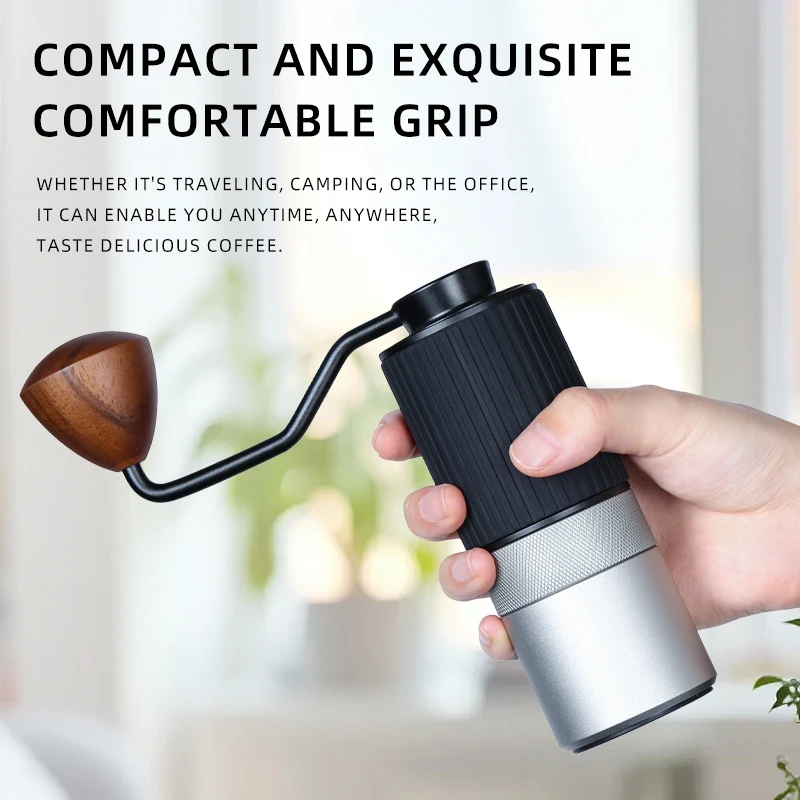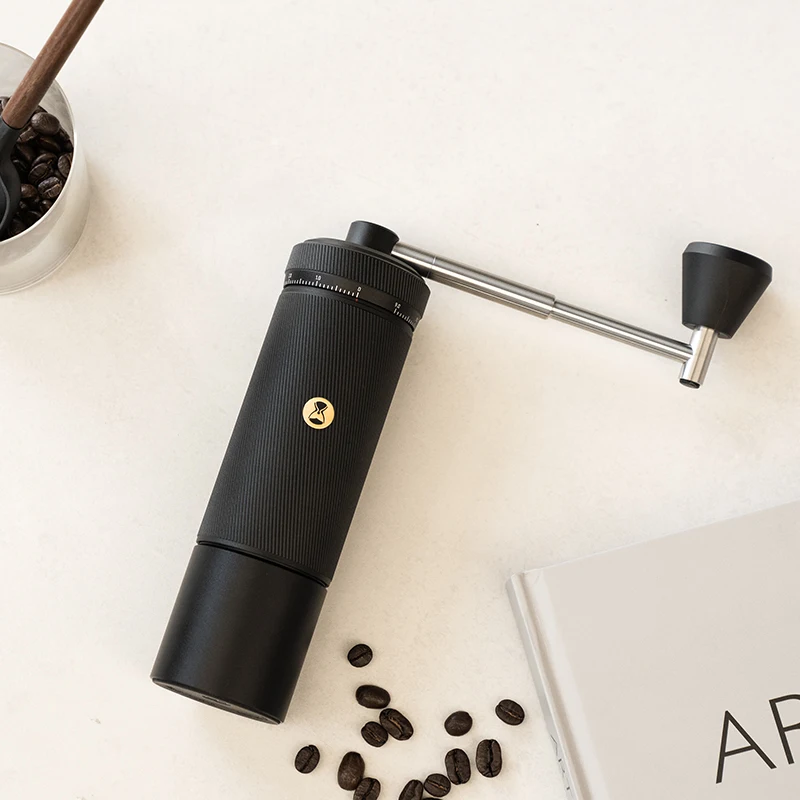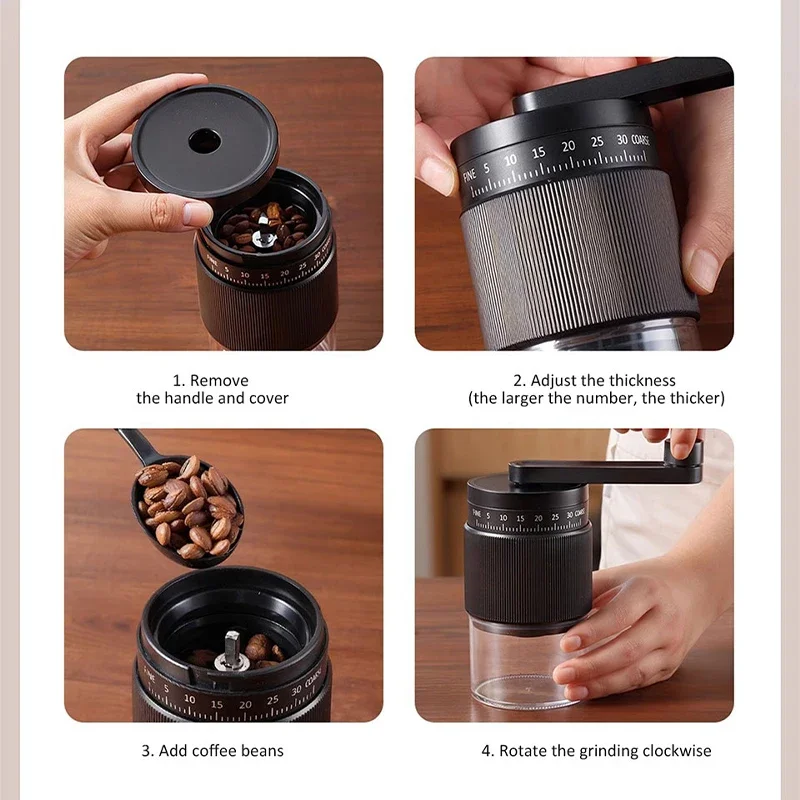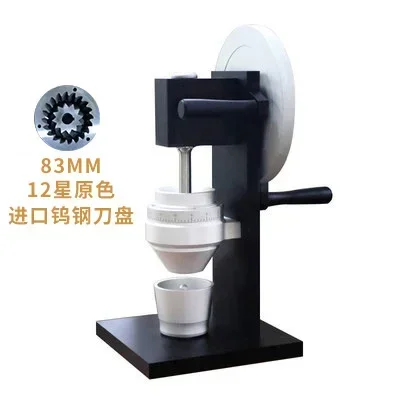Coffee enthusiasts know that the secret to a perfect cup lies in the details – and perhaps none is more important than how you grind your beans. Among the various grinding options available, flat burr grinders have earned a reputation for producing truly exceptional results. But what exactly makes them superior? Let’s explore the science and benefits behind flat burr grinders and why they might be worth the investment for your coffee journey.
Understanding Flat Burr Grinder Mechanics and Design
At their core, flat burr grinders feature two parallel, ring-shaped metal discs positioned horizontally – one stationary and one rotating. This seemingly simple design holds the key to their superior performance. Coffee beans enter through the center and are methodically crushed as they move outward between these precisely machined burrs.
What sets flat burrs apart is their parallel alignment. This critical design feature ensures that beans are ground with remarkable consistency as they pass through the grinding zone. The distance between the burrs can be adjusted with precision, allowing for meticulous control over particle size – a fundamental aspect of proper coffee extraction.
The importance of this design becomes clear when we consider particle distribution. High-quality flat burrs typically come in various sizes – from 58mm in prosumer models to professional-grade 83mm burrs in commercial equipment. Larger burrs generally allow for more precise grinding and better heat dissipation, which preserves delicate coffee flavors.
Understanding these superior coffee grinding principles helps explain why many coffee professionals prefer flat burrs. The design focuses on creating a more uniform grind size, which leads to more even extraction and, ultimately, better flavor in your cup.
For those seeking a deeper understanding of how these mechanisms function, exploring the mechanics of manual flat burr grinders reveals how this precision engineering translates to better brewing results.
The Science of Grind Consistency: Unimodal vs. Bimodal Distribution
When discussing grind quality, we often refer to particle distribution – a concept that dramatically impacts how coffee extracts and tastes. This distribution generally falls into two categories:
- Unimodal distribution: Most particles cluster closely around a target size, with minimal variation
- Bimodal distribution: Significant presence of both fine particles and coarse particles, with fewer medium-sized particles
Flat burr grinders excel at producing more unimodal distributions, where the majority of particles are remarkably similar in size. This consistency leads to more even extraction during brewing, as water interacts with particles of similar surface area throughout the coffee bed.
In contrast, conical burrs typically produce more bimodal distributions, with a wider variation in particle sizes. While this can add complexity to some brewing methods, it can also lead to uneven extraction – with finer particles over-extracting (creating bitterness) while larger particles under-extract (adding sourness).
High-quality flat burr grinders can achieve particle size variations of less than 200 microns – a level of consistency that directly translates to cleaner, more balanced flavors in your cup. This science behind particle distribution explains why many coffee professionals insist on flat burrs for precision brewing methods.
Flat vs. Conical Burrs: Grind Quality Comparison
When comparing flat and conical burr grinders directly, several key differences become apparent in their grinding performance:
| Feature | Flat Burrs | Conical Burrs |
|---|---|---|
| Particle uniformity | Highly uniform | Less uniform |
| Fines production | Minimal | Moderate to significant |
| Extraction profile | Even, clean | Variable, sometimes complex |
| Heat generation | Moderate (higher in older designs) | Generally lower |
| Grind retention | Varies by design | Often less retention |
The most significant advantage flat burrs offer is their superior particle uniformity. While conical burrs create more “fines” (tiny coffee particles that extract quickly), flat burrs produce a more consistent grind size across the spectrum. This consistency translates directly to extraction quality – the process where water pulls flavors from coffee grounds.

Research has shown that flat burr grinders can produce particle distributions with standard deviations up to 30% lower than comparable conical models. This mathematical advantage has real-world implications: more predictable extractions and clearer flavor separation.
For those specifically interested in manual brewing options, understanding the differences between flat and conical burr manual grinders can help determine which style better suits particular brewing preferences and techniques.
How Grind Consistency Transforms Flavor in the Cup
The technical advantages of flat burr grinders directly translate to noticeable differences in your coffee cup. The uniform particle size leads to even extraction, which produces remarkable clarity in flavor.
When coffee grounds are consistent in size, water extracts compounds from them at a similar rate. This balanced extraction reveals:
- Brighter, more defined acidity
- Cleaner mouthfeel with less muddiness
- More distinct flavor separation between notes
- Enhanced perception of sweetness
- Improved balance between flavors
Coffee experts often describe cups brewed from flat burr grinds as having greater “transparency,” allowing you to taste the nuanced flavors that make specialty coffee so remarkable. The clarity achieved through uniform extraction from flat burrs lets you experience the full range of flavors – from delicate floral notes to rich chocolate undertones.
This consistency is especially valuable when brewing light-roasted, single-origin coffees where subtle flavor characteristics distinguish one bean from another. The precision grinding creates a foundation for showcasing these distinctions rather than masking them with inconsistent extraction.
Technical Advantages of Flat Burr Grinders for Precision Brewing
Beyond basic grind consistency, flat burr grinders offer several technical advantages that matter significantly to coffee enthusiasts seeking precision:
- Superior repeatability – Once dialed in, flat burr grinders produce remarkably consistent results from one grinding session to the next
- Precise adjustment capability – Many flat burr systems allow for micrometric adjustments, essential for fine-tuning espresso extraction
- Better performance with light roasts – The cutting efficiency of flat burrs handles denser light-roasted beans effectively
- Improved flavor separation – The uniform extraction allows distinct flavor notes to shine independently
Modern flat burr grinders have also addressed historical concerns about heat generation. Contemporary designs incorporate improved materials and cooling systems to manage heat dissipation effectively. High-quality models use specially hardened steel burrs (often measuring 55-65 HRC on the Rockwell hardness scale) that maintain their cutting edge for years of daily use.

For espresso enthusiasts in particular, understanding the impact of burr shape on espresso consistency reveals why flat burrs have become the preferred choice in professional settings where precision and repeatability are paramount.
Brewing Method Compatibility: Where Flat Burrs Excel
Different brewing methods benefit from flat burr grinders to varying degrees. Here’s how they pair with common brewing techniques:
Espresso: Excellent
The uniform particle distribution allows for precise control over flow rate and extraction time – critical factors for consistent espresso. The ability to make micro-adjustments helps achieve the perfect extraction.
Pour-Over: Excellent
The clarity and clean cup that flat burrs produce perfectly complements the bright, nuanced flavors that pour-over methods aim to highlight. The consistency helps achieve even extraction throughout the coffee bed.
AeroPress: Very Good
The versatility of this brewing method benefits from the precision grinding that flat burrs provide, especially when experimenting with different techniques and recipes.
French Press: Good
While the immersion method is somewhat forgiving of grind inconsistency, the cleaner cup produced by flat burrs reduces the muddiness sometimes associated with French press brewing.
Cold Brew: Good
The long extraction time makes this method more forgiving of grind inconsistency, but flat burrs still help produce a cleaner-tasting final product with less sediment.
Finding the correct grind setting for espresso becomes much more manageable with a quality flat burr grinder, as the consistency allows for more precise control over extraction variables.
Potential Drawbacks: The Other Side of Flat Burr Grinders
Despite their many advantages, flat burr grinders aren’t without potential downsides:
- Higher cost: Quality flat burr grinders typically start at $200-300 for entry-level models, with high-end options easily exceeding $800
- Larger footprint: The parallel burr design often requires more space than conical alternatives
- Weight considerations: The substantial construction necessary for stability means most quality flat burr grinders weigh 15+ pounds
- Noise levels: Many flat burr grinders operate at higher decibel levels than comparable conical models
- Grind retention: Some designs trap more grounds between the burrs, though modern models increasingly address this concern
- Alignment sensitivity: Long-term performance depends on maintaining precise burr alignment
For many users, the primary barrier is cost – quality flat burr grinders represent a significant investment compared to entry-level conical models or blade grinders. Additionally, their size and weight make them less portable and more demanding of counter space.
Understanding these disadvantages of burr grinders helps set realistic expectations and allows for an informed decision based on individual priorities and brewing habits.
Fine Adjustment Hand Grinder, Precision Manual Grinder, Travel Coffee Grinder
Price range: $185.11 through $494.63 Select options This product has multiple variants. The options may be chosen on the product pageHand Burr Grinder, Hand Crank Coffee Grinder, Manual Espresso Grinder, Portable Coffee Grinder
Price range: $262.72 through $300.22 Select options This product has multiple variants. The options may be chosen on the product pageManual Burr Mill, Manual Coffee Grinder Stainless Steel, Manual Coffee Mill Grinder, Mechanical Coffee Grinder
Price range: $127.26 through $130.32 Select options This product has multiple variants. The options may be chosen on the product pageHand Burr Grinder, Manual Coffee Grinder Stainless Steel, Precision Manual Grinder
Price range: $183.64 through $187.52 Select options This product has multiple variants. The options may be chosen on the product page
Who Benefits Most from a Flat Burr Grinder Investment
While flat burr grinders offer superior performance, they’re not necessarily the right choice for everyone. Those who benefit most include:
- Dedicated espresso enthusiasts who need precise, consistent grinding for proper extraction
- Specialty coffee connoisseurs who want to experience the full flavor potential of premium beans
- Light roast aficionados who appreciate the clarity and distinction between subtle flavor notes
- Home baristas who value consistency and repeatability in their daily brewing routine
If you primarily brew light to medium-roasted single-origin coffees and appreciate the nuanced differences between beans, the investment in a flat burr grinder will likely provide noticeable improvements in cup quality. Similarly, if you’re passionate about espresso and find yourself frustrated by inconsistent results, a quality flat burr grinder could resolve many extraction issues.
For those ready to explore options, our selection of flat burr hand grinders offers quality choices that deliver professional-grade results in a more compact format than their electric counterparts.
Evaluating Value: Is the Premium Price of Flat Burrs Justified?
The higher cost of flat burr grinders often raises questions about value. Consider this perspective: a quality flat burr grinder might cost $300-500 more than an entry-level conical model but will likely last 7-10 years with proper maintenance. This breaks down to about 14-20 cents per day over its lifespan.
For someone brewing two coffees daily, the “premium” for using a flat burr grinder amounts to roughly 7-10 cents per cup – a modest investment considering how significantly it can improve the quality of your coffee experience.
Furthermore, high-quality burrs can process 1,000+ pounds of coffee before showing significant wear. For the average home user grinding 1-2 pounds monthly, this translates to decades of consistent performance.

When comparing with the $4-6 cost of cafe-purchased coffee, brewing at home with a quality grinder offers substantial long-term savings while providing superior results. Our collection of manual coffee burr grinders includes options at various price points to match different budgets and brewing needs.
Frequently Asked Questions About Flat Burr Grinders
Are flat burrs more difficult to clean than conical burrs?
Flat burrs can be slightly more challenging to clean due to their parallel design, which sometimes retains more grounds. However, modern designs have significantly improved accessibility for cleaning.
Do flat burrs wear out more quickly than conical burrs?
When made from quality materials, flat burrs typically last just as long as conical burrs. High-quality flat burrs can grind 1,000+ pounds of coffee before needing replacement.
Can flat burr grinders handle all grind sizes effectively?
Yes, quality flat burr grinders excel across the spectrum from fine espresso to coarse French press grinds, though some models are optimized for specific ranges.
What is “burr seasoning” and why does it matter for flat burrs?
Burr seasoning refers to the process where new burrs become smoother and more consistent after grinding several pounds of coffee. This process is particularly beneficial for flat burrs, as it improves their already excellent consistency.
How does flat burr size affect performance?
Larger burrs generally provide better consistency and can grind more quickly at lower RPMs, which generates less heat. However, they also increase the size and cost of the grinder.
For ongoing performance, following proper manual burr grinder maintenance guidelines helps ensure your investment continues to deliver exceptional results. Those interested in the most advanced grinding technology might also explore our precision manual grinder collection featuring state-of-the-art burr designs.
The superiority of flat burr grinders comes down to their unmatched consistency and the clean, clear flavors they help extract. While they require a greater initial investment, the noticeable improvement in cup quality makes them the preferred choice for those who truly value exceptional coffee.







